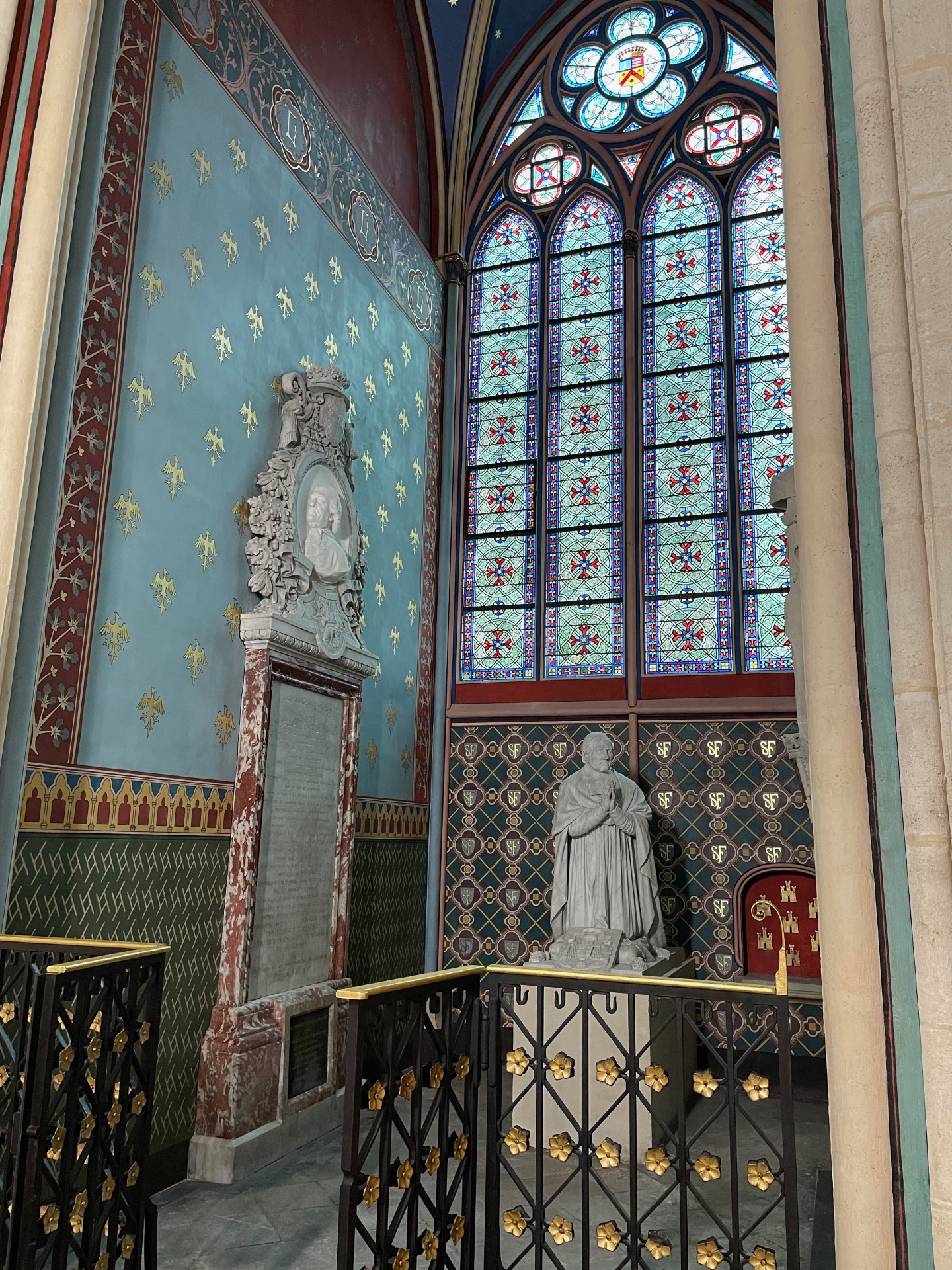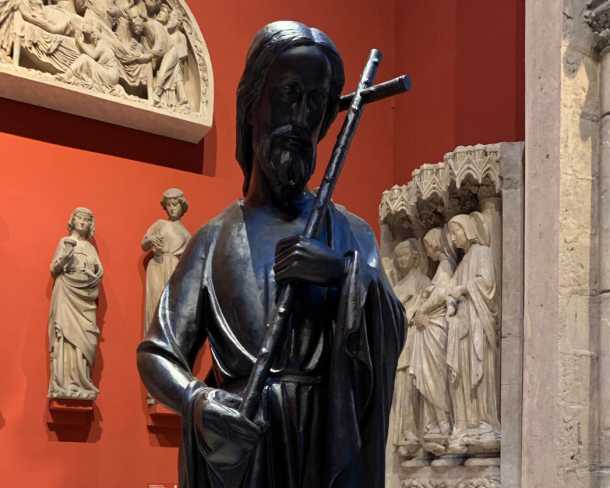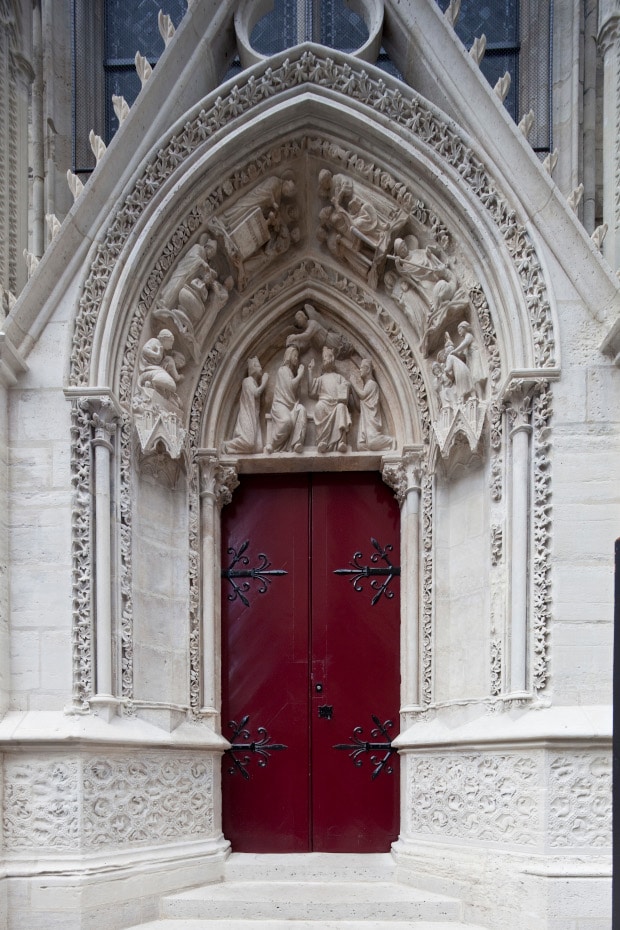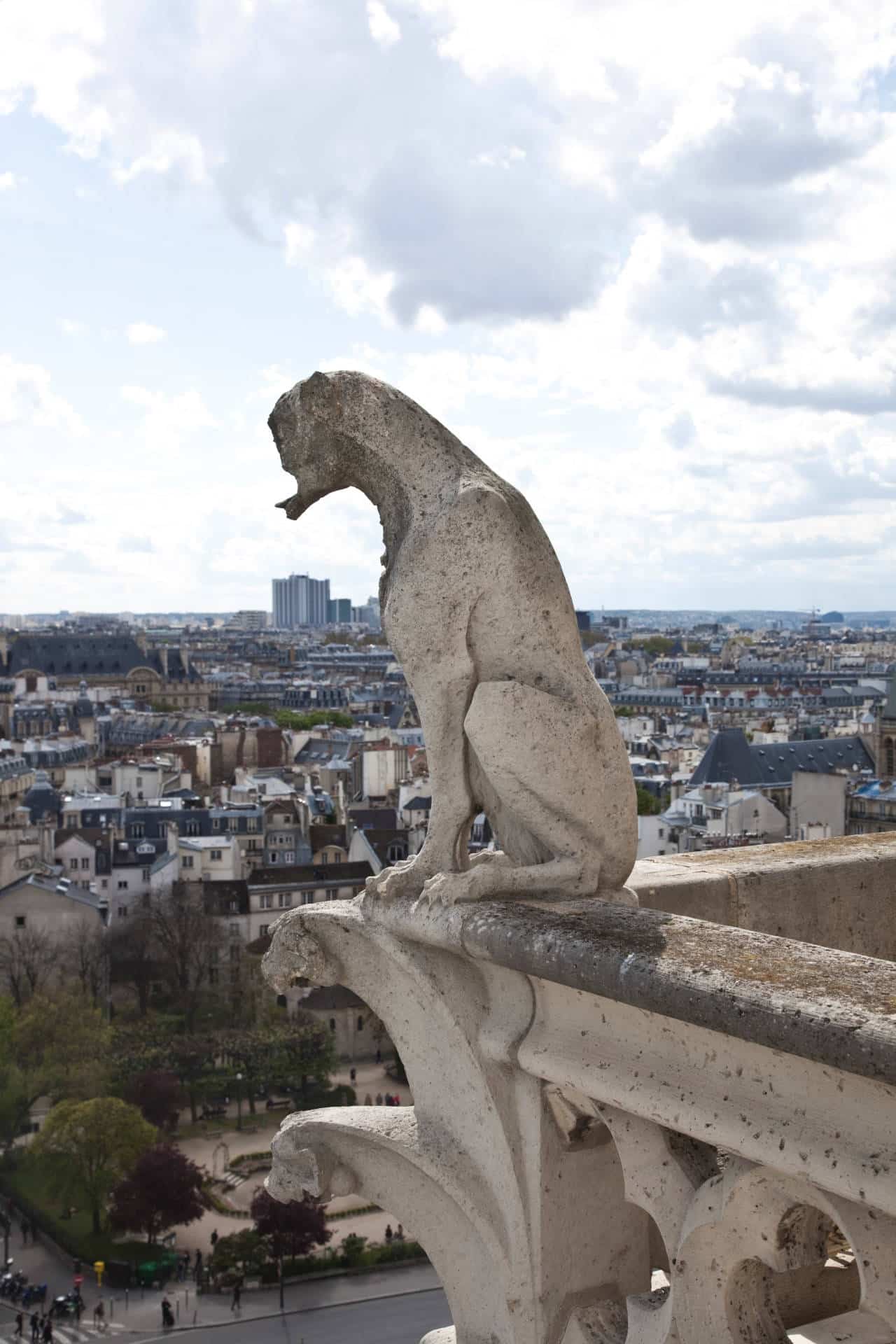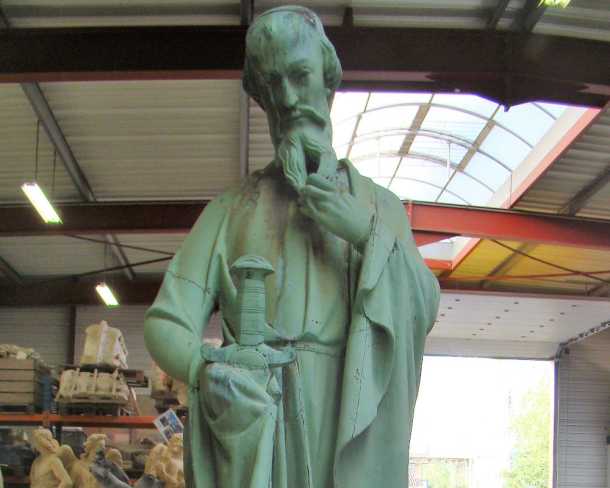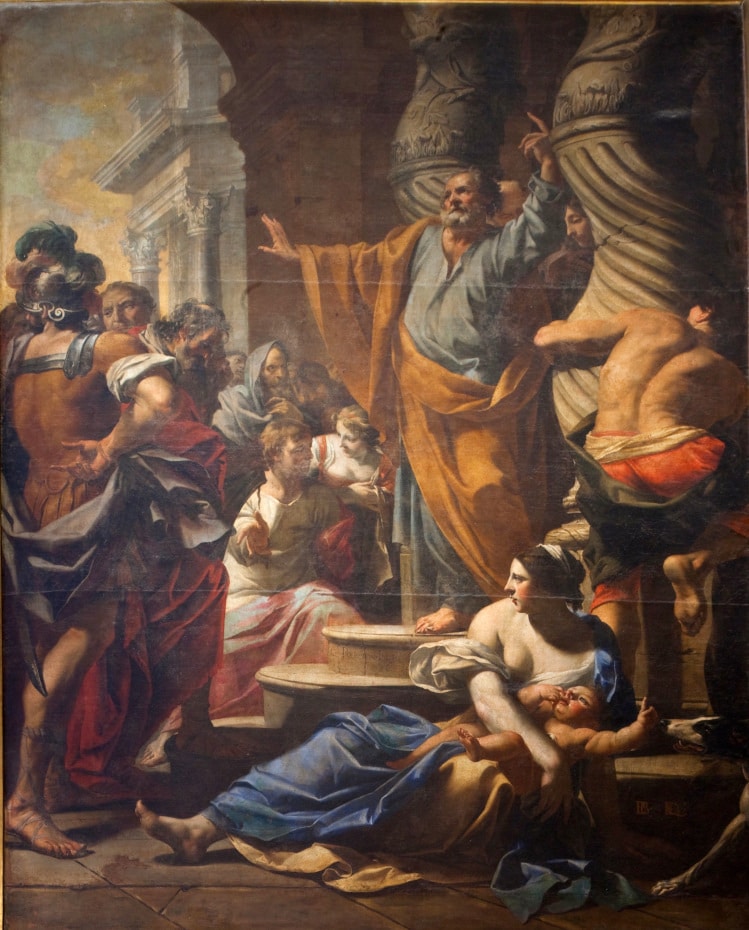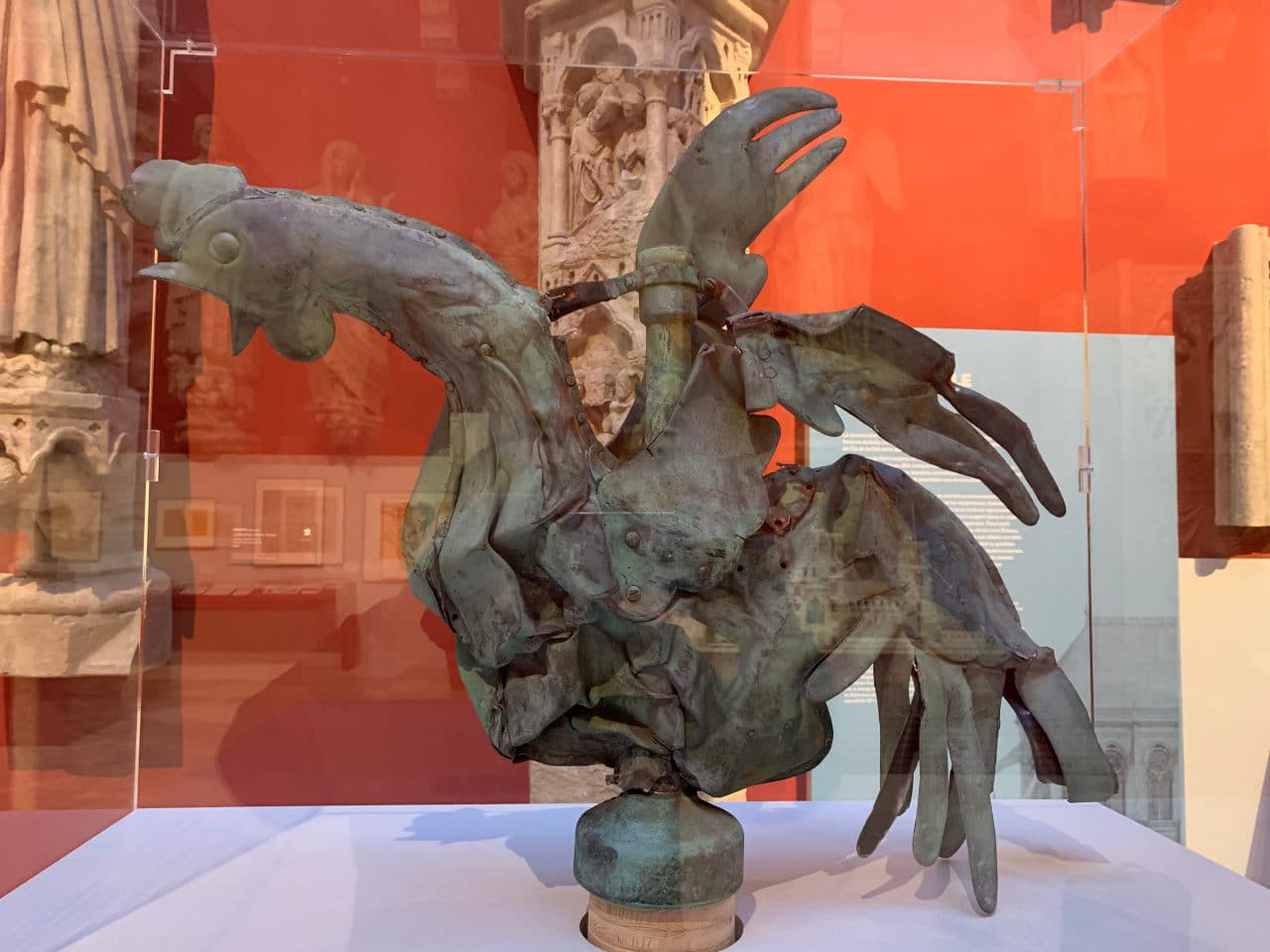Twenty-nine chapels added in the 13th century surround the interior of the building. Those placed around the choir are called "radiating chapels".
During the Middle Ages, wealthy families had chapels consecrated to ensure regular services given in memory of deceased relatives. To do this, the families created a foundation, offered an annuity to a chaplain, and monopolized a dedicated space. In the 14th century, the number of foundations increased, as did the number of chapels.
Chapels are decorated with an altar, a light, statues or paintings, reliquaries of a patron saint, tombs, and sometimes elaborate wall decorations. Drawings show us that many elements from Notre-Dame’s chapels were destroyed during the French Revolution.
Several bishops and archbishops of Paris are buried in these chapels. The decoration of the tomb of Simon Matifas de Bucy, bishop from 1290 to 1304, is the only vestige painted in the 13th century that remains in Notre-Dame Cathedral. Among the many engraved flagstones, only that of Canon Étienne Yvert, who died in 1468, remains.
